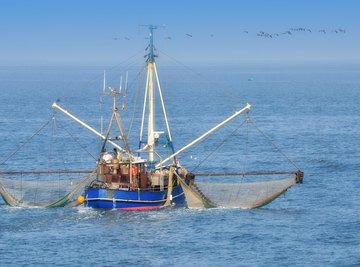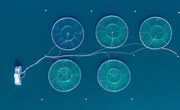
Fish farming is the raising of specific species of fish in enclosures or special tanks. The fish raised on farms are primarily for food, though the objectives of this aspect of aquaculture include more than increasing the seafood supply. There are employment and economic advantages, as well as the possibility of sustaining species that might be over-fished if not for the controlled environments of fish farms.
Meeting Global Demand
The Environmental Defense Fund notes that the global demand for seafood has jump dramatically since the 1980s. An aging population will increase demand on seafood supplies, since older adults tend to eat more seafood than any other group. The EDF acknowledges that fish farming is the only reasonable way to meet the surging demand for fish around the world. The demand is especially high, which trails only Japan and China in per capital consumption of seafood.
Protecting Species
The fish most commonly raised on fish farms include:
- cod
- salmon
- carp
- tilapia
- catfish
- European seabass
Given the increasingly effective means of fishing available to the average angler and commercial fisherman, these fish might be at risk of being over-fished if not for the protected environments of fish farms. Aquaculture experts are always on the lookout for fish species that can be helped by fish farming and spared the risk of extinction.
Providing Economic Boost
When fishing restrictions have become law in states with thriving fish industries, a number of state governments have sought to cushion the blow by providing training programs for commercial fishermen to learn aquaculture. Coastal areas in particular may benefit from having fish farm operations in their communities, because of the jobs associated with the construction and operation of a fish farm.
Improving Quality
Though ongoing tweaks in aquaculture can help improve filtration, feeding, reproduction, net harvest and other aspects of fish farming, the safety and quality of the seafood can also be improved as the fish are studied in the controlled environment of fish farms. Researchers can check to see if the fish are healthy and are eating and reproducing at optimal levels. Though there remain questions about possible pollution effects in areas surrounding fish farms, scientists and engineers are seeking ways to minimize harmful impact.
References
About the Author
James Roland started writing professionally in 1987. A former reporter and editor with the "Sarasota Herald-Tribune," he currently oversees such publications as the "Cleveland Clinic Heart Advisor" and UCLA's "Healthy Years." Roland earned his Bachelor of Science in journalism from the University of Oregon.
